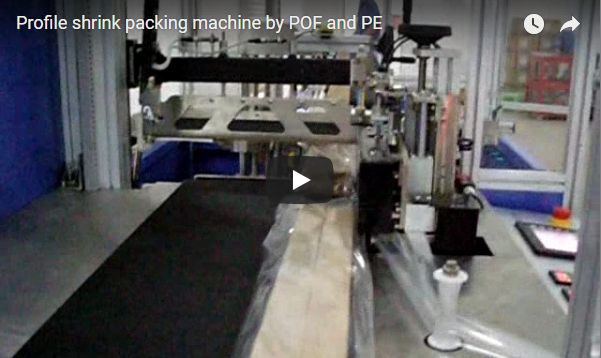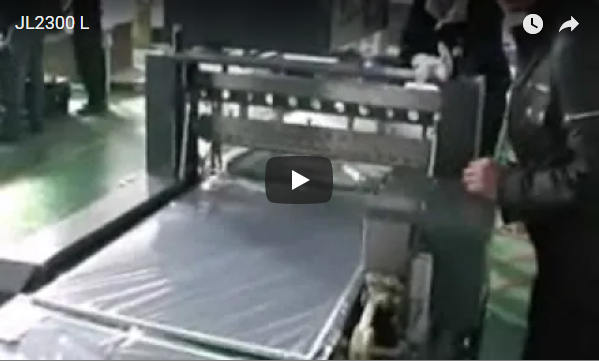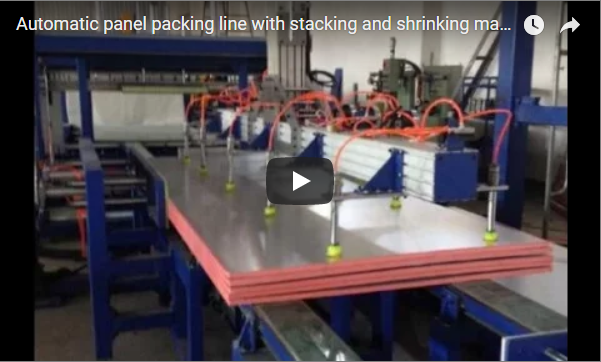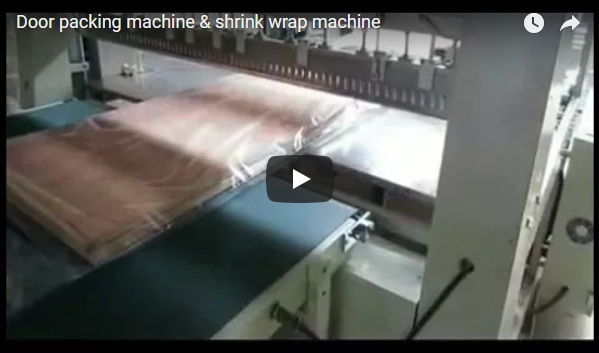Streamlining Long Product Packaging: A Fabricator's Look at Automatic Banding and Shrink Wrapping Systems
Handling and packaging long, often unwieldy materials like metal profiles, extrusions, pipes, or lumber bundles presents unique challenges on the shop floor. Manual processes are often labor-intensive, inconsistent, and can lead to product damage during transit. An integrated automatic banding and shrink wrapping line offers a robust solution, boosting efficiency and protecting valuable products. Let's take a closer look at how these systems operate and the benefits they bring to fabrication environments.
1. The Core Challenge: Packaging Long & Awkward Loads
Fabricators dealing with items like aluminum extrusions, steel bars, plastic pipes, or wooden profiles know the difficulties:
- Manual Labor Costs: Strapping and wrapping long bundles manually requires significant time and manpower.
- Inconsistent Packaging: Manual wrapping can vary in tightness and coverage, potentially leaving products vulnerable.
- Risk of Damage: Improperly secured bundles can shift, scrape, or bend during handling and shipping.
- Throughput Bottlenecks: Manual packaging stations often struggle to keep pace with production output.
Automated systems are designed specifically to overcome these hurdles.
2. Anatomy of an Automated Banding & Shrink Line
While specific configurations vary, a typical automated line integrates several key stages:
- Infeed Conveying: Products are loaded onto the line, often via roller or belt conveyors, ensuring proper alignment for the subsequent steps.
- Automatic Banding (Strapping): One or more strapping heads automatically apply and tension plastic bands (typically PP or PET) around the bundle at predetermined intervals. This secures the items together, preventing shifting.
- Benefit: Consistent tension and placement for superior bundle integrity.
- Bagging/Wrapping Station: The banded bundle moves into a wrapping station. Here, a layer of protective film (often PE - polyethylene) is applied. This could be a simple sleeve or a more complete wrap using stretch film technology, depending on the machine's design.
- Benefit: Provides initial protection against dust, moisture, and surface scratches.
- Heat Shrink Tunnel: The film-wrapped bundle passes through a heat tunnel. Controlled hot air circulation causes the PE shrink film to contract tightly around the contours of the bundle.
- Benefit: Creates a taut, weather-resistant, and tamper-evident final package. The tight fit further immobilizes the products.
- Cooling & Outfeed: After exiting the tunnel, the package may pass through a cooling zone to set the film before moving onto an outfeed conveyor for removal and staging.
(Placeholder: Consider adding an image here showing a bundle entering the shrink tunnel. Alt text: "Metal profile bundle wrapped in film entering an industrial heat shrink tunnel.")

3. Key Technical Parameters to Consider
When evaluating such systems, fabricators should look at specifications like:
- Bundle Dimensions (L x W x H): Ensure the machine can handle your minimum and maximum product sizes.
- Maximum Bundle Weight: Critical for conveyor and handling system capacity.
- Throughput Speed: Typically measured in packs per hour or meters per minute. Needs to match or exceed production requirements.
- Banding:
- Strap Type & Size Compatibility (e.g., 12mm PET, 9mm PP)
- Number and Position of Straps (programmable?)
- Wrapping Film:
- Film Type (PE Shrink Film recommended)
- Film Thickness Range (microns)
- Max Roll Diameter/Width
- Shrink Tunnel:
- Tunnel Aperture (WxH)
- Heating Method & Power
- Temperature Control Range
- Control System: PLC-based controls are standard, offering flexibility and diagnostics.
- Power & Air Requirements: Ensure compatibility with facility infrastructure.
(Placeholder: Consider adding an image here showing the control panel or a close-up of the banding head. Alt text: "PLC control panel for an automated packaging line." or "Close-up of an automatic strapping head applying a band to a bundle.")
4. From the Shop Floor: Real-World Benefits Observed
Having worked with fabricators adopting these systems, the practical advantages become quickly apparent:
- Drastic Reduction in Labor: Staff previously tied up in manual packaging can be reassigned to higher-value tasks. Often, one operator can oversee the entire automated line.
- Improved Package Quality & Consistency: Every bundle gets the same secure banding and tight shrink wrap, leading to a professional appearance and, more importantly, significantly reduced shipping damage claims. Customers notice the difference.
- Increased Throughput: The automated line easily outpaces manual methods, eliminating bottlenecks and helping meet tighter delivery schedules.
- Enhanced Material Protection: The combination of banding and a tightly shrunk film provides excellent protection against weather, dust, dirt, and incidental contact during handling and storage.
- Safer Operations: Automating the handling and wrapping of heavy or awkward bundles reduces risks associated with manual lifting and maneuvering.
5. Choosing the Right System for Your Needs
Selecting the ideal automatic banding and shrinking line involves assessing:
- Product Characteristics: The size, shape, weight, and fragility of your typical bundles.
- Required Speed: Matching the line's capacity to your production volume.
- Level of Automation: Do you need fully automatic infeed/outfeed integration, or is semi-automatic sufficient?
- Available Floor Space: These lines can have a significant footprint.
- Budget: Balancing initial investment against long-term savings in labor and damage reduction.
- Integration: How will the system integrate with existing production lines?

6. Conclusion: A Smart Investment for Efficiency and Protection
For fabricators handling long products, an automatic banding and shrink wrapping line represents a significant step forward. It directly addresses common pain points related to labor costs, package integrity, and throughput. By automating the process, these machines deliver consistent, high-quality packaging that protects products from the factory floor to the customer's site, ultimately enhancing operational efficiency and safeguarding profits.
For more details on specific shrinking solutions, explore options like those found here:
https://www.fhopepack.com/Shrinking_machine.html
Contact us for inquiries: info@fhopepack.com






